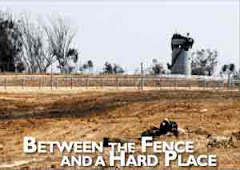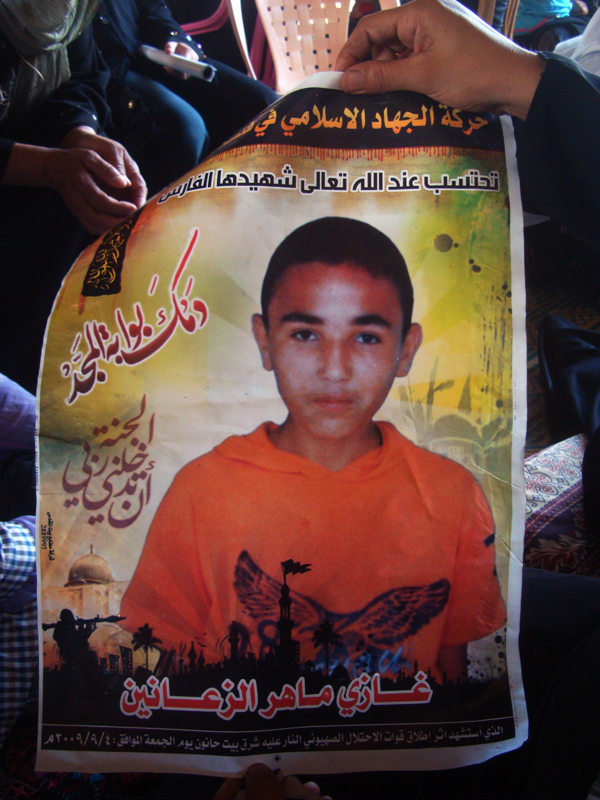International Solidarity Movement
19 June 2010

Snipers fired barrages of live ammunition within meters of these women as the hand-harvested wheat two weeks ago
The catastrophic Israeli attack on the Gaza Freedom Flotilla, which left 9 dead, has rightly horrified the international community. However, lethal force by the Israeli military is nothing new to Palestinians. In the Gaza ‘buffer zone’, live ammunition is routinely used against unarmed demonstrators and farmers.
* The ‘buffer zone’ is illegal
The Israeli military violently enforces a zone of 300 meters to 2 kilometers along Gaza’s lengthy border with Israel, in direct violation of the Oslo Accords of the 1990’s. This zone claims 30% of Gaza’s farmland, and some of its most fertile.
* The Israeli military shoots unarmed farmers
Farmers attempting to cultivate land in the ‘buffer zone’ are routinely met with barrages of live ammunition and occasional artillery shells. Exacerbating widespread poverty and malnutrition, farmers cannot access one third of their land without facing extreme danger.
* Farmers have launched a campaign of popular non-violent resistance
Unarmed demonstrations are held in the ‘buffer zone’, internationally recognized as Gazan land, to protest the illegal confiscation of farmland which has such grave consequences for Gaza’s struggling population.
* Live ammunition is used as a form of ‘crowd dispersal’ against unarmed demonstrators, with deadly consequences
Unarmed demonstrators in the ‘buffer zone’ are intentionally shot with live fire. In April 2010 alone, at least six demonstrators were injured by bullets. This includes Maltese activist Bianca Zammit who was shot in the thigh while filming the demonstration in clear view of soldiers. The following week, 19-year-old Ahmad Dib was shot at a demonstration and bled to death two hours later.
* The international community cannot remain silent
Human rights activists are prevented from entering Gaza; prevented from documenting and reporting on the humanitarian crisis. Israel uses live ammunition against unarmed demonstrators and farmers because it is shielded from international scrutiny. Tell Israel to stop shooting unarmed civilians on Gazan land.

Israeli sniper watching wheat harvest
1. Contact your representatives to demand that Israel be held accountable for violence against unarmed activists and end the siege on Gaza
Call or email your representative to Israel, http://www.embassiesabroad.com/embassies-in/Israel
Write your own or use the provided letter at the end of the article
2. Support the call from Palestinian Civil Society for Boycott, Divestment and Sanctions against Israel
After the recent attack on International activists aboard boats of the Gaza Freedom Flotilla, the Boycott National Committees have called for an intensification of BDS campaigns and actions around the world (http://www.bdsmovement.net/?q=node/710). While the raid is no longer in the news, Israeli armed forces are still targeting Gazan non-violent activists. Every week near the ‘buffer zone’, demonstrators and farmers are shot at with live ammunition. The violence against these activists, just as the violence against the Freedom Flotilla, cannot be ignored.
3. Target local shops that sell Israeli products, http://www.bdsmovement.net/?q=node/4
Supermarkets, clothing stores and consumer goods from Israel can be the focus of a BDS campaign. Find a campaign in your area or launch one today!
Ongoing campaigns: http://bdsmovement.net/?q=node/54
Activist resources: http://bdsmovement.net/?q=node/49
Sample Letter to your representative:
Dear Ambassador,
If unarmed farmers and protesters were being shot with live ammunition in the United States, Europe or any country which claimed democratic credentials, the international community would be justifiably outraged.
Yet Gazans attempting to farm or demonstrate in the illegal ‘buffer zone’ are routinely shot with live ammunition. In the past twelve months, at least 220 Israeli attacks have been carried out in the ‘buffer zone’, with 116 coming since the beginning of 2010 (as of April 30th).* In the first four months of 2010, over 50 Gazans were injured, and 16 were killed in these attacks.
30% of Gaza’s arable farmland, and some of it’s most fertile, lies within the ‘buffer zone’.* Farmers who attempt to work in the zone face routine live fire and crop destruction, in addition to occasional artillery shells.
Israel shoots farmers trying to grow crops on Gazan land for an impoverished and malnourished society.
Unarmed demonstrations in the zone, internationally-recognized Gazan territory, are organized by Gazan farmers. In April alone, at least six demonstrators were shot and injured by live ammunition fired by Israeli snipers. Among the injured was Maltese activist Bianca Zammit, who was shot in the thigh while standing in clear view, filming the demonstration. The following week,
19-year-old Ahmad Dib was shot in the leg and died two hours later from blood loss.
For the Palestinians who escape only with gunshot injuries, the impact extends far beyond initial pain. Daily cleaning of the wound is required, metal plates replace shattered bones, and permanent disabilities are frequent. Such injuries are devastating, as the wounded are frequently the only wage-earner in a large extended family.
The attack on the Freedom Flotilla brought international criticism of Israel’s ongoing human rights violations, but
criticism alone is not enough. It is clear that the international community cannot remain silent as the humanitarian crisis in Gaza is perpetuated through policies such as this.
The use of live ammunition in the ‘buffer zone’ must end.
Sincerely,
(Your Name)
For more information, see:
BDS Movement, http://www.bdsmovement.net/
International Solidarity Movement, http://palsolidarity.org/
Fishing Under Fire, http://www.fishingunderfire.blogspot.com/
Farming Under Fire, http://farmingunderfire.blogspot.com/







